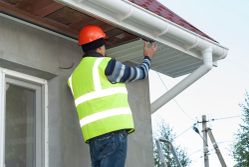4 Bat Removal Do's & Don'ts

Bats are a crucial part of the ecosystem, helping control pesky insects by eating more than 6,000 bugs a night. However, as necessary as they are, you certainly don't want them in your home. If one does wind up inside, follow these do's and don'ts to ensure effective bat removal.
Do:
Give the bat an exit.
If a bat has found its way from your attic into your home, it probably doesn't want to be there any more than you want it there. Sometimes, the most straightforward solution is trapping the bat in the room with a natural exit. Open a window, shut the door, and contact a bat removal expert if the animal doesn't find its way out.
Seal possible entry points.
 Once you’ve removed the bat from your home, you need to find out where it got in to prevent re-entry. Most of the time, bats enter through the roof via loose fascia or roof vents. Securing these points by covering them with wire mesh is a useful buffer for future bat activity.
Once you’ve removed the bat from your home, you need to find out where it got in to prevent re-entry. Most of the time, bats enter through the roof via loose fascia or roof vents. Securing these points by covering them with wire mesh is a useful buffer for future bat activity.
Don’t:
Make direct contact with the bat or its feces.
Bats can act as vectors for diseases that may be harmful to humans. These diseases can be transferred via direct contact with the bat or its waste, so it's best to have a professional bat removal company handle the situation if close contact is needed.
Kill it.
In Connecticut, all species of bats except the big brown bat are protected under law. That means killing one is illegal, and could carry a hefty fine. Instead, try removing the bat from your home non-lethally, and contact a professional if you aren't successful.
If you have a bat or any other unwanted animal in your home, the team at American Bio-Tech Wildlife Services in New Milford, CT, can handle the wildlife removal you need. They’ll install one-way entry points in the attic, allowing bats to exit but not re-enter. They can also take care of other pests, including raccoons, mice, and snakes. Learn more about their services by calling (860) 355-1231 or visiting their website.
About the Business
Have a question? Ask the experts!
Send your question

